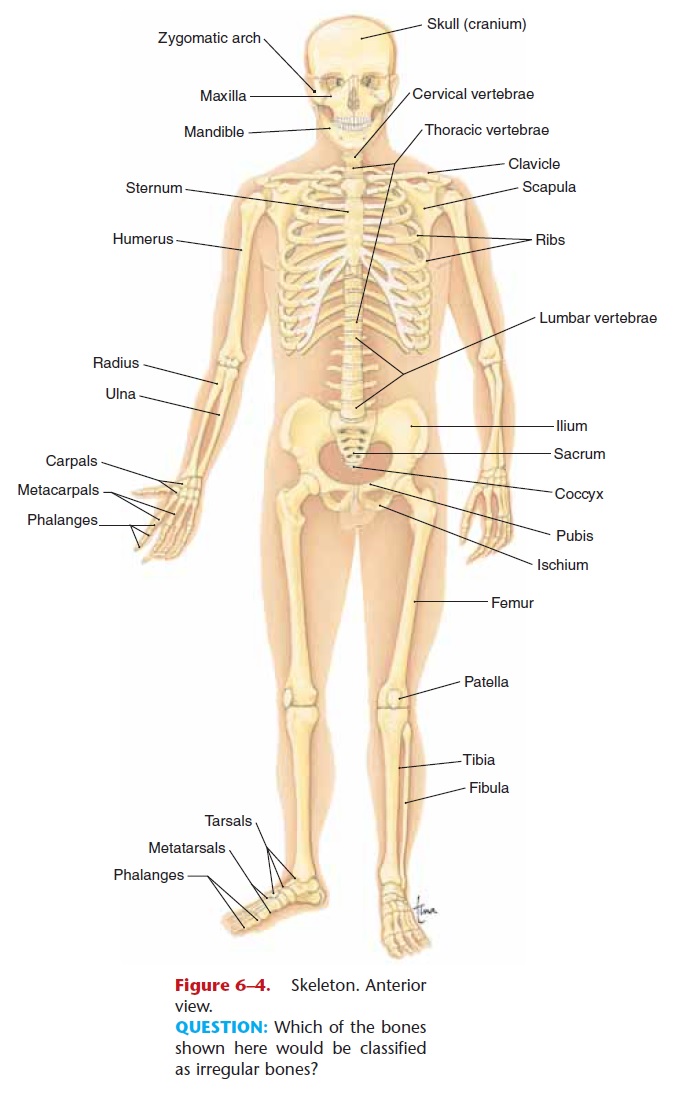Chapter: Essentials of Anatomy and Physiology: The Skeletal System
The Skeleton
THE SKELETON
The human skeleton has two divisions: the axial skele-ton, which forms the axis of the body, and the appen-dicular skeleton, which supports the appendages or limbs. The axial skeleton consists of the skull, vertebral column, and rib cage. The bones of the arms and legs and the shoulder and pelvic girdles make up the appendicular skeleton. Many bones are connected to other bones across joints by ligaments, which are strong cords or sheets of fibrous connective tissue. The importance of ligaments becomes readily apparent when a joint is sprained. A sprain is the stretching or even tearing of the ligaments of a joint, and though the bones are not broken, the joint is weak and unsteady. We do not often think of our ligaments, but they are necessary to keep our bones in the proper positions to keep us upright or to bear weight.
There are 206 bones in total, and the complete skeleton is shown in Fig. 6–4.

Related Topics